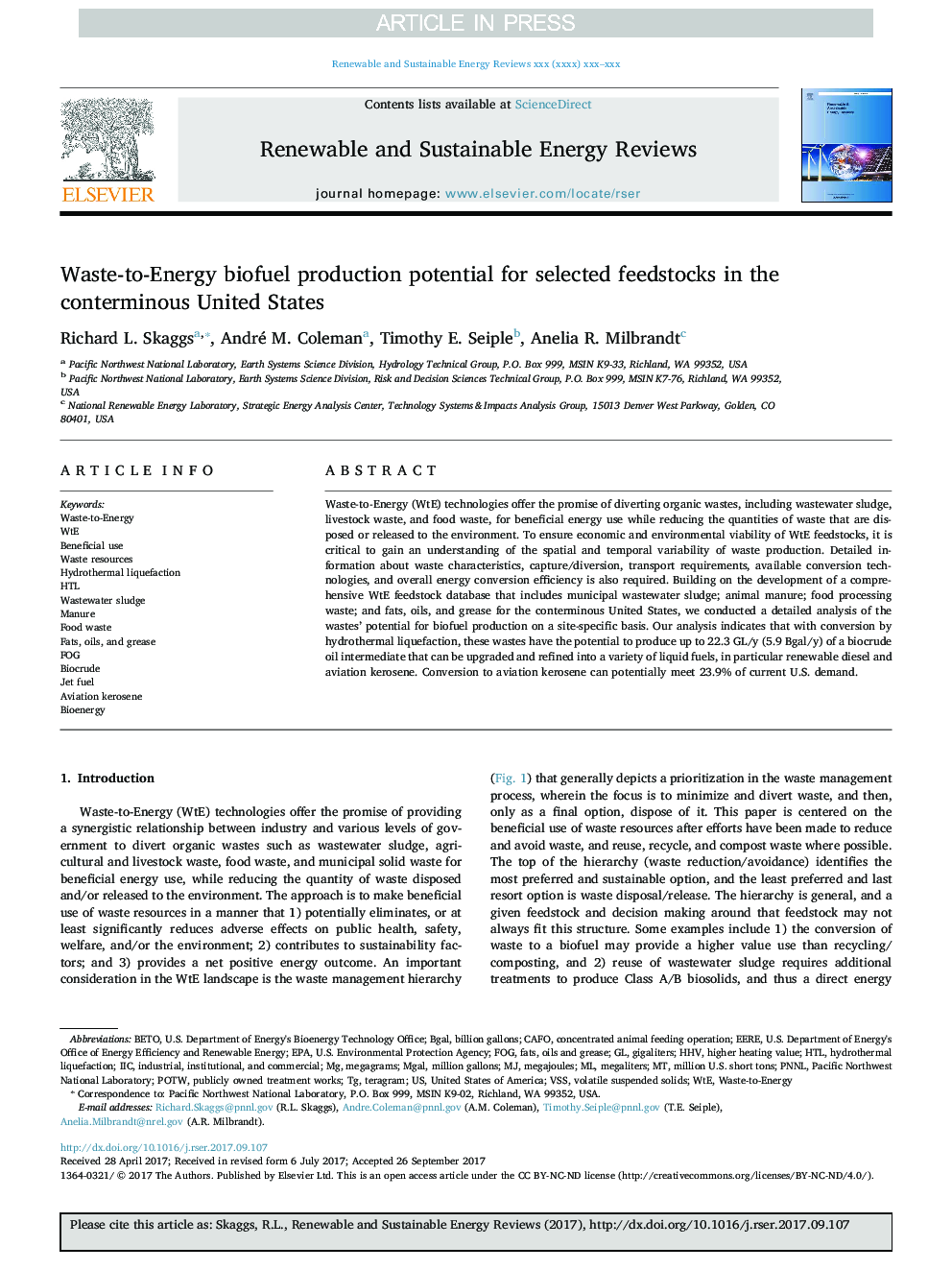| Article ID | Journal | Published Year | Pages | File Type |
|---|---|---|---|---|
| 8111889 | Renewable and Sustainable Energy Reviews | 2018 | 12 Pages |
Abstract
Waste-to-Energy (WtE) technologies offer the promise of diverting organic wastes, including wastewater sludge, livestock waste, and food waste, for beneficial energy use while reducing the quantities of waste that are disposed or released to the environment. To ensure economic and environmental viability of WtE feedstocks, it is critical to gain an understanding of the spatial and temporal variability of waste production. Detailed information about waste characteristics, capture/diversion, transport requirements, available conversion technologies, and overall energy conversion efficiency is also required. Building on the development of a comprehensive WtE feedstock database that includes municipal wastewater sludge; animal manure; food processing waste; and fats, oils, and grease for the conterminous United States, we conducted a detailed analysis of the wastes' potential for biofuel production on a site-specific basis. Our analysis indicates that with conversion by hydrothermal liquefaction, these wastes have the potential to produce up to 22.3Â GL/y (5.9Â Bgal/y) of a biocrude oil intermediate that can be upgraded and refined into a variety of liquid fuels, in particular renewable diesel and aviation kerosene. Conversion to aviation kerosene can potentially meet 23.9% of current U.S. demand.
Keywords
Related Topics
Physical Sciences and Engineering
Energy
Renewable Energy, Sustainability and the Environment
Authors
Richard L. Skaggs, André M. Coleman, Timothy E. Seiple, Anelia R. Milbrandt,
